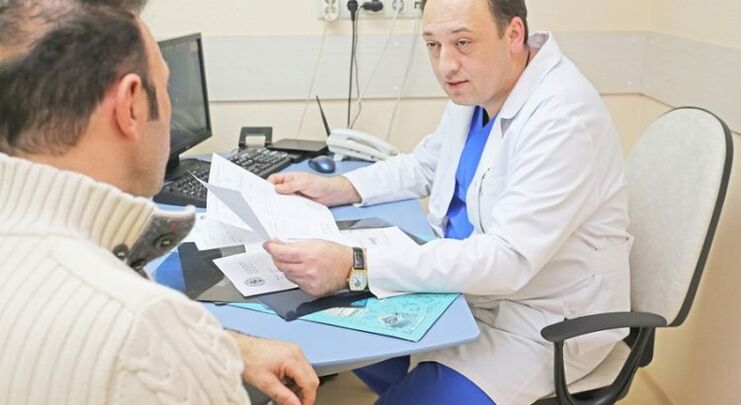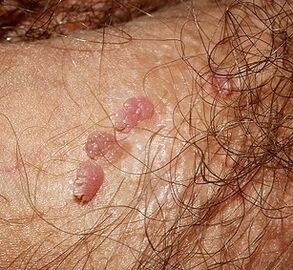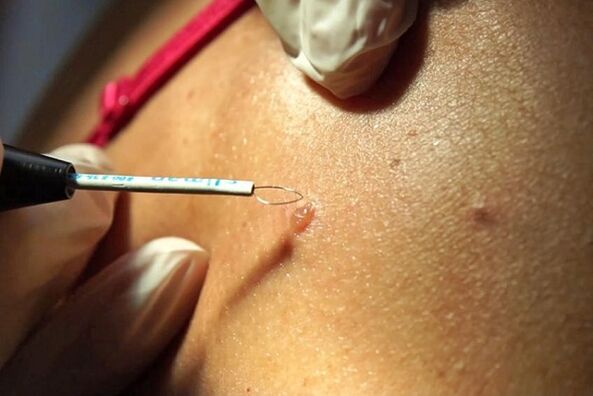
Often, people are unaware that human papilloma virus (HPV) is present in their bodies.This is because the papillomavirus usually exists in a latent form, suppressed by natural immunity.Problems arise when it gets out of control and begins to actively manifest itself in the form of growths on different parts of the body.Men suffer less from the consequences of the virus than women, however, even for them, its effects can lead to serious problems in the form of papillomas on the penis.
reason
Viral DNA enters the body through small cracks in the skin or mucous membranes.If a man's immunity is weakened, the first manifestations of the HPV virus will appear several months after infection.
Up to 80% of transmission occurs through sexual contact.Barrier contraception minimizes the risk of infection, but does not eliminate it completely.
Other routes of infection:
- Family way.The virus is transmitted through personal belongings of an infected person: clothes, toiletries, etc.The risk of transmission increases if there are lesions on the skin, however small.This pathway is characterized by infection by viruses with low oncogenic potential.They do not lead to serious health problems but appear as warts, papillomas and warts, creating cosmetic defects.
- From mother to child.If the mother is infected with HPV virus during pregnancy, childbirth and natural childbirth, the possibility of infecting the child is very high.
If a man has good immune defenses, the virus will not manifest itself and can remain in the body for a long time in a latent form.Therefore, what is dangerous is not the viral infection itself, but the weakening of the immune system that leads to the activation of HPV.
There are several factors that influence the ability of the virus to strengthen:
- chronic disease;
- Hormonal problems;
- Incorrectly selected contraceptive method or its complete absence;
- viral infection;
- alcohol, smoking, or long-term antibiotic use;
- frequent stress.
All these factors negatively affect the immune system.If in a man's life there is not one provoking factor, but many, this will lead to faster development of papillomavirus.
Symptom
Usually papillomas only appear externally but in some cases they can appearNon-specific symptoms:
- itching and burning during sex;
- pain when touching the papilloma;
- accumulation of urine in the folds of the penis;
- unpleasant odor in the affected area.
Additionally, tumors can develop and not only affect the penile area but also appear in the anus and pubic bone.

What do papillomas look like?
A papilloma on the penis is a small growth.At first, it may appear alone, but without proper treatment, the number of papillomas will increase.At the same time, they can merge with each other.
Such new growths look like flesh-colored or pink cauliflower inflorescences.Usually they are localized in the foreskin area, on the head and frenulum.Less commonly, they are diagnosed in the urethra and scrotum.Papillomas can also appear as small white bumps that appear in long rows.This form is typical for positioning in the brake region.
One of the manifestations of HPV is Buschke-Levenshtein cell carcinoma.It is characterized by rapid growth, outstanding size and resistance to various types of treatment.Its appearance is due to several existing papillomas and papillomas, which merge with each other and form one large affected area.The presence of Buschke-Levenshtein warts is dangerous because cells altered by it can easily develop into cancer.
Which doctor should I contact?
As a rule, urologists diagnose papillomas in men.You can also consult a dermatologist or proctologist if you have warts in the anal area.However, to remove papillomas, they are usually referred to a surgeon.In total, diagnosis takes place in several stages:
- The urologist examines and interviews the patient.An oral interview is necessary to evaluate the patient's lifestyle and determine the cause of the viral infection.Visual examination involves assessing not only the condition of the penis, but also neighboring organs - scrotum, anal area.This is necessary to complete the picture of the localization of the virus.
- Submit a smear from the urethra.Determine the presence of various sexually transmitted diseases.
- PCR.This analysis not only shows the presence of HPV in the body, but is also capable of determining its type.
- Meat endoscopy.This procedure is to examine the urethra if the papillomavirus has affected the frenulum.
- After removing the papillomaYour doctor may order a biopsyto evaluate the status of a distant tumor.This is necessary to eliminate the risk of cancer and ensure that the papilloma is benign.
In this case, it is recommended to test both partners.Usually the woman is also infected with one of the papillomaviruses.If just one man gets treatment, he will probably get sick again after a while.
Why are papillomas dangerous?
Human papillomavirus is often accompanied by other related diseases.The appearance of papillomas in the glans penis contributes to the accumulation of urine in the folds.This creates conditions for the appearance and growth of various microorganisms, which then lead to infection.They can cause erosion around the papilloma and also contribute to inflammation of the urethra and testicles.These diseases are characterized by problems with urination, pain, and high fever.
Another danger is damage to the tumor, leading to bleeding.This is due to the fact that many blood vessels form around the papillomas, supplying them with blood.Even minor injuries can lead to infection due to trauma.
In addition, the tumors can rub when moving, causing pain and discomfort for the man.
HPV and cancer
When the virus first started spreading, tumors were rare and benign.If left untreated, they will grow and fuse together.Over time, the cells degenerate into malignancy.The risk of cancer is especially high if a man is infected with the highly carcinogenic types of HPV - 16 or 18.They contribute to the development of penile and bladder cancer.
Papilloma treatment
Treatment of HPV includes not only eliminating its external manifestations, but also strengthening the immune system, helping to suppress the manifestations of the virus.To maintain immunity, immunostimulants are used.
An ointment that blocks the replication of viruses and eliminates small tumors is as effective as an antiviral drug.It does not always fulfill the task of complete removal, but prevents the appearance of new tumors.To stimulate the immune system, antiviral ointments are prescribed.The ointment does not remove papillomas but helps activate cells of the immune system, preventing their growth and development.

Removal method
There are several ways to remove emerging tumors:
- Laser removal.The papilloma is exposed to laser light, completely burning off the growth.A crust forms at this site and falls off after a few weeks.This method is considered effective because there is no recurrence.Removal is performed under anesthesia.In this case there is no bleeding, no scarring or scarring.
- Cold destruction.Papillomas exposed to liquid nitrogen.It instantly freezes the desired area, the tumor on it is destroyed and dies.The disadvantage of this method is the inability to control the depth of cold destruction.A crust also remains at the site of the removed papilloma, which disappears after a while.
- Radiosurgery.The operating principle of this method is similar to laser removal.Radio waves do not leave scars, and before the procedure you will be given preliminary anesthesia using a special spray.After that there were no complications, the body recovered quickly.
- Burn electricity.The growth is exposed to an electric current, as a result of which the stalk is removed, after which the papilloma disappears.If necessary, superficial anesthesia can be used.This procedure takes a few minutes, is common and affordable.But this method can leave scars after healing.
- Surgical intervention.It is used in rare cases when the tumor becomes too large.It is performed under anesthesia and is characterized by long-term wound healing and trauma.The beauty of this method is that it allows you to preserve the removed growth for histological examination.
The price of each method depends on the complexity of the work, size and number of papillomas to be removed.
Before choosing any method, consult your doctor.He will tell you the best way to use in your case and tell you in detail how to carry out the procedure.In addition, after tumor resection, material should be taken for histology.This is necessary to determine whether the process of degeneration of a benign tumor into a malignant one has begun.This method will help detect cell changes early and prevent the spread of cancer.

























